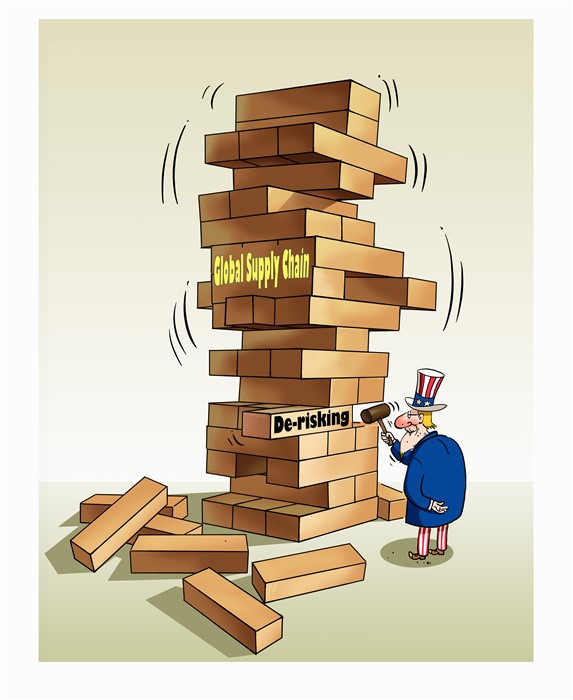U.S. 'de-risking' rhetoric: Where on earth do risks come from?
The "de-risking" rhetoric recently peddled frequently by some politicians in the U.S. and other Western countries is merely a new disguise for their old trick of decoupling.

Cartoon by Ma Hongliang
Although some U.S. officials said their country was seeking to "de-risk and diversify,” not decouple from China, they are still pursuing decoupling in the name of "de-risking" by building "a small yard with high fences" to seek a technology blockade against China.
"De-risking" is a fancy slogan, as it signals moves made to further identify "risks" from China and to deal with them, German magazine Der Spiegel pointed out.
The so-called "de-risking" strategy has led to the human intervention and fragmentation of global industrial and supply chains, disrupted the normal functions of global markets, undermined market rules and the international economic and trade order, and has had an impact and created disorder on the global economic governance system.
As facts show, the U.S., which has been clamoring for “de-risking," is the biggest source of “risks."
Photos
Related Stories
Copyright © 2023 People's Daily Online. All Rights Reserved.









